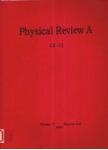版权所有:内蒙古大学图书馆 技术提供:维普资讯• 智图
内蒙古自治区呼和浩特市赛罕区大学西街235号 邮编: 010021

作者机构:Center for Quantum Information and Quantum Control Department of Physics and Department of Electrical & Computer Engineering University of Toronto Toronto Ontario Canada M5S 3G4 Institute for Quantum Computing University of Waterloo 200 University Avenue West Waterloo Ontario Canada N2L 3G1 Quantum Information Theory Group Institut für Theoretische Physik I and Max-Planck Research Group Institute of Optics Information and Photonics Universität Erlangen-Nürnberg D-91058 Erlangen Germany
出 版 物:《Physical Review A》 (物理学评论A辑:原子、分子和光学物理学)
年 卷 期:2007年第75卷第5期
页 面:052336-052336页
核心收录:
学科分类:070207[理学-光学] 07[理学] 08[工学] 0803[工学-光学工程] 0702[理学-物理学]
主 题:SEPARABILITY CRITERION NONORTHOGONAL STATES COHERENT STATES CRYPTOGRAPHY PROTOCOL DIFFERENTIATE SECURITY THEOREM PROOF
摘 要:We investigate two-way and one-way single-photon quantum key distribution (QKD) protocols in the presence of loss introduced by the quantum channel. Our analysis is based on a simple precondition for secure QKD in each case. In particular, the legitimate users need to prove that there exists no separable state (in the case of two-way QKD), or that there exists no quantum state having a symmetric extension (one-way QKD), that is compatible with the available measurements results. We show that both criteria can be formulated as a convex optimization problem known as a semidefinite program, which can be efficiently solved. Moreover, we prove that the solution to the dual optimization corresponds to the evaluation of an optimal witness operator that belongs to the minimal verification set of them for the given two-way (or one-way) QKD protocol. A positive expectation value of this optimal witness operator states that no secret key can be distilled from the available measurements results. We apply such analysis to several well-known single-photon QKD protocols under losses.